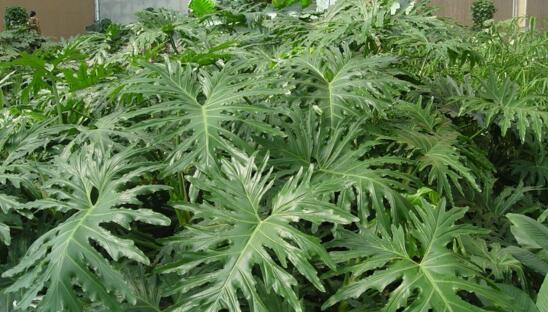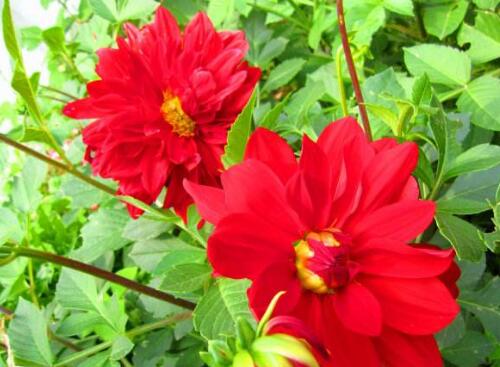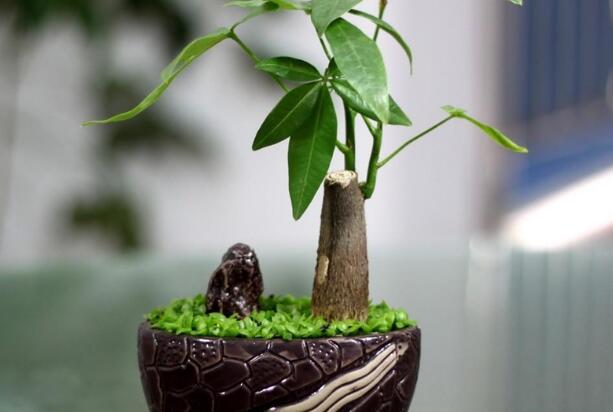How to raise spring feathers, the breeding methods and precautions of spring feathers / avoid bright light
As a foliage plant, Chunyu has always been loved by people. It can be arranged in living rooms, gardens and many other places. It can be said to be a very easy plant to raise, but it still requires some skills to raise it well. So how to raise Chunyu? The editor will introduce the breeding methods and matters needing attention of Chunyu in detail.
How to raise Chunyu

Before we know how to raise Chunyu, we need to know some of its characteristics. Chunyu likes the high-temperature and humid environment very much, but its requirement for light is not high, and its dark resistance is very good. It can grow even in places where the indoor light is not strong, but it is not cold-resistant and is more suitable for pot culture. Next, we will introduce in detail from the aspects of soil, light, temperature, water and fertilization.
1. Lighting
Because of its dark resistance, Chunyu does not have high requirements for light. It needs to be maintained in a shady place in summer and in a sunny place in winter.
Note: do not put the spring feather in the sun, which is easy to be overlooked in the breeding methods and precautions of spring feather. Many people think that spring feather likes sunlight as much as other plants, but in fact it is not. It prefers dark places, of course, not too dark.
2. Temperature
Spring feather more suitable growth temperature is 15-30 degrees, when the temperature is more than 10 degrees it begins to grow, its cold resistance is not good, so it is best not to let it in the environment of less than 5 degrees.
Note: in winter, the temperature in the south is too low, so don't keep the spring feather in the dark for a long time, you can move it to a place with plenty of light, and keep the temperature above 5 degrees.
3. Soil
Chunyu prefers fertile and acidic soil, so it is best to use sandy soil with loose and good drainage. When potted, peat and perlite are generally used to make nutritious soil. Rotten leaf soil, peat soil and original soil can also be mixed with a small amount of river sand and mixed.
Note: be sure to ensure the good permeability and drainage of the soil, so that nutrients can be better absorbed by spring feathers when watering or fertilizing. In the breeding methods and matters needing attention of spring feathers, the choice of soil is the basis to ensure the health of spring feathers.
4. Moisture
When Chunyu is in a humid environment, its growth and development is the fastest, so at ordinary times we should water frequently, the requirement for water is not high, you can use Amoy rice water and so on.
Note: do not wait until the basin soil is dry before watering, ensuring the wetness of the basin soil is very helpful for the growth of spring feathers, and watering times should be increased in summer.
5. Fertilization
Chunyu does not have high requirements for fertilizer, and its adaptability is very strong, but if you want Chunyu to grow healthier and more beautiful, it is necessary to apply fertilizer once a month to make it absorb more nutrients and make the leaves more beautiful.
Note: fertilization should be evenly sprayed, and do not put the fertilizer too close to the rhizome, this is not conducive to plant absorption, on the contrary, it may affect the development of the rhizome.
Summary: this paper introduces in detail the breeding methods and matters needing attention of spring feathers, of which the most important ones are light, water, temperature, soil, water and fertilization.
How to raise Chunyu? Breeding methods and matters needing attention of Spring Feather
Chunyu is a perennial evergreen herbaceous foliage plant with long and thick petioles, pinnately split leaves, dark green, rich luster, and high ornamental value. It has a good decorative effect in halls, indoor gardens, offices and other places. It is a very good choice for indoor potted plants. So, how to raise Chunyu? Now the breeding methods and matters needing attention of Chunyu are introduced as follows.
Picture: Chunyu
First, the culture method of spring feather
1. Soil: spring feather culture is not strict on the soil, it is better to use sandy loam rich in humus and good drainage, and potted plants are generally made of peat and perlite.
two。 Watering: spring feather likes a humid environment and has a large demand for water. It is necessary to keep the basin soil moist in the growth cycle, especially in the summer high temperature period, but not too much watering. The accumulation of water in the basin soil can easily lead to the root rot and death of the spring feather plant.
3. Sunshine: Chunyu is not strict with light and is not resistant to long-term shade, otherwise it will cause lighter leaves, longer petioles and sagging leaves. Also can not be directed by strong light, otherwise the leaf is easy to appear leaf tip dry, leaf edge scorched edge, leaf color whitening and loss of luster.
4. Fertilization: spring feathers need to provide sufficient fertilizer in the period of vigorous growth, mainly nitrogen fertilizer is better, and pay attention to not applying too much fertilizer at one time, it is best to apply thin fertilizer frequently. After autumn, we should pay attention to control the amount of fertilizer application, and stop fertilization when the temperature is below 20 ℃.
5. Diseases and pests: the diseases of spring feather include leaf spot, anthracnose and so on. Carbendazim, methyl thiophanate and Dysen zinc are generally used to control them, and the effect is obvious. Insect pests are mainly red spiders, shell insects and so on, which can be controlled by spraying, and environmental management should be strengthened at the same time.
6. Pruning: spring feather breeding for a period of time, spring feathers will begin to appear yellow leaves, withered leaves, scorched leaves and other conditions, which should be checked. If it is not caused by diseases, but just a simple metabolism, then it is necessary to prune the old leaves in time to reduce the loss of plant nutrients.
Picture: Chunyu
II. Matters needing attention in spring feather culture
1. Chunyu likes a warm climate, and the breeding temperature needs to be kept at about 20 ℃, not less than 10 ℃, while avoiding heating, air conditioning and cold wind.
two。 Chunyu has a great demand for water, and the air humidity is required to be kept between 50% and 75%, which is less than 50% of the dry edge of yellow leaves, which can be increased by spraying and spraying water.
3. Spring feather watering is best carried out when the surface of basin soil is dry, and can be kept moist in high temperature in summer. If the ambient temperature is lower than 15 ℃ in winter, dry and wet alternating watering is needed.
4. Spring feather likes the light but avoids strong direct light. It is best to maintain the environment in a semi-shaded or scattered place, not in a shady environment for a long time.
5. Spring feather fertilization is based on the principle of frequent application of thin fertilizer, mainly nitrogen fertilizer, the best application of thin fertilizer, a small amount of fertilizer every other week (or more), so that there will be no fertilizer damage.
6. Spring plume ventilation is very important, but be sure not to over-ventilate, because indoor plants are different from outdoor plants, and greenhouse plants can not immediately adapt to the external environment.
Picture: Chunyu
[editor's conclusion] Chunyu likes a warm, humid and semi-overcast environment and is afraid of cold, so he needs to pay more attention to it in the process of maintenance. The above introduces the breeding methods and matters needing attention of Chunyu. I hope it can be helpful to everyone!
How to raise Spring Feather Culture methods and matters needing attention
Most of the names of plants are based on their shape and appearance. Chunyu is a green plant that looks like a feather. Usually planted in some public places, because the spring feather is a relatively large plant, so usually the space where the spring feather is located needs to be larger.
How to raise Chunyu
Chunyu likes the high temperature and humid growth environment, does not have high requirements for light, and has a strong ability to withstand shade. Spring feather is not cold-resistant, the suitable temperature for growth is between 18 ℃ and 25 ℃, and the overwintering temperature in winter is not lower than 5 ℃. Chunyu likes sandy soil that is loose, fertile and well drained.
Methods of spring feather culture and matters needing attention
1. Soil
As far as the habit of spring feather is concerned, spring feather likes slightly acidic soil with fertile, loose and good drainage, so it has lower requirements for soil. Family cultivation of spring feather can be made by mixing a small amount of river sand, such as rotten leaf soil, peat soil and garden.
2. Watering
Spring feather likes a wetter environment and requires more water, but the requirement for water is not high, so you can pour Amoy rice water at ordinary times. Pay attention to keeping the soil moist during the growing period. It should be noted that the amount of water needs to change according to the season. In summer, spray water on and around the leaves to maintain a moist environment; in winter, you should reduce the frequency of watering.
3. Fertilization
Spring feather has strong adaptability, no matter wet environment or dry condition, it can adapt as soon as possible. Therefore, the demand for fertilizer is not high, put some hoof slices or deep fry on the bottom of the basin, and then only apply liquid fertilizer, such as thin pancakes, once a month. Special attention should be paid to little or no fertilization in winter to meet the needs of plants.
4. Light temperature
Spring feather likes temperature and shade, but is not cold-resistant and afraid of light, and avoids strong light irradiation. The suitable temperature is 18 °- 25 °. Therefore, it is necessary to move the spring feather to a shady place in summer to avoid direct sunlight. In winter, it can be moved to a place with sufficient light to make the overwintering temperature as high as 8 °. 5. Diseases and insect pests
The common diseases of spring feather include leaf spot and anthracnose, which can be controlled by carbendazim, methyl topiramate and so on. If there are some problems such as yellow and withered leaves, they need to be trimmed. The common pests of spring feathers include red spiders and shell insects, which can be controlled by special pesticides. In addition, more ventilation is needed to prevent insect pests.
6. Reproduction
The temperature should be kept at a fixed value of about 20 °to avoid overheated or cold air environment; humidity should be kept high, and more water should be sprayed and sprinkled to increase the moderation of the environment; light and temperature should be kept at a normal value to avoid being too high or too low; the principle of fertilization is "frequent application of thin fertilizer" and mainly nitrogen fertilizer; high watering frequency should ensure that it is moist at all times in summer and dry and wet alternately in winter.
How does Chunyu spend the winter?
1. Control of room temperature
If you want insurance, octave and above can safely survive the winter, the minimum had better not be less than zero degrees Celsius. Although plants may be able to bear it and slowly come back to life the following spring, let's not make fun of our beloved plants.
2. Moisture control
We may have all heard that the origin of Chunyu is in a hot and humid place, so there is a great demand for water. Although dormancy begins in winter and the amount of water needed is reduced accordingly, we should not forget to water it. Water in time when the basin soil becomes dry and cracked, but do not soak in water. In addition, it can be taken care of by sprinkling water on the leaves and spraying water into the surrounding environment.
3. Control of lighting.
If you put it in a dark place for a long time, its leaves may slowly turn yellow and the beautiful green will gradually disappear. So let it see the light on a regular basis. However, it doesn't like long-term light either. Yes, it's a little harsh. So choose a semi-shaded environment, or bask in the sun for a while and then take it back in time.
4. Fertilizer control
Pay attention to the dosage from the end of autumn, winter will enter the dormant period, almost no nutrients, so fertilizer should be suspended.
The solution to the decay of spring feather leaves
If it has already rotted, if it is not serious, it can be pruned according to it. If there is too much water or improper fertilization, it needs to be replanted by changing the soil.
Be sure to choose soil that is both permeable and breathable before planting plants, so that even if you water too much occasionally, it will be easy to drain out.
Don't pour it in at once during daily watering, you can pour it slowly, and you can grasp the amount of water when watering to see how much water you put in, and the drain hole below will come out, and then make a record, so that you can compare the watering in the future. When the temperature drops to 15 degrees, watering must be controlled, when the plant's demand for water gradually weakens.
When fertilizing at ordinary times, we must pay attention to the concentration of fertilizer, dilute the thicker fertilizer, and slowly apply it along the edge of the basin.
Try to choose a place with good ventilation for maintenance.
It is important for cultured plants to create an appropriate growth environment according to the normal growth needs of plants, and to pay attention to some important growth links of plants, such as flowering, reproduction, wintering and summer, and often pay attention to the growth status of plants to deal with corresponding diseases and insect pests and special symptoms.
- Prev

How to maintain dahlias in winter / pay attention to pruning dead branches / receive proper light
Dahlia is a world-famous flower, which is grown in many countries around the world. However, the vitality of this kind of flower is not very strong, especially not cold-resistant, so how to maintain Dahlia in winter? Next, the editor will take you to learn about it.
- Next

How to fertilize the rich tree and what fertilizer is the best / compound fertilizer for the rich tree every 15 days
Raising wealth trees at home has become a choice for more and more people, because wealth trees not only have a good meaning, but also have a strong appreciation, and more importantly, beautify the home environment and purify the air. However, it is beautiful to get rich and beautiful, but it is not easy to raise it well. in addition to watering, fertilization should also be paid great attention.
Related
- Fuxing push coffee new agricultural production and marketing class: lack of small-scale processing plants
- Jujube rice field leisure farm deep ploughing Yilan for five years to create a space for organic food and play
- Nongyu Farm-A trial of organic papaya for brave women with advanced technology
- Four points for attention in the prevention and control of diseases and insect pests of edible fungi
- How to add nutrient solution to Edible Fungi
- Is there any good way to control edible fungus mites?
- Open Inoculation Technology of Edible Fungi
- Is there any clever way to use fertilizer for edible fungus in winter?
- What agents are used to kill the pathogens of edible fungi in the mushroom shed?
- Rapid drying of Edible Fungi

